At this technological revolution level stands the gummy industry. Advances...
Read MoreThe Secret Ingredients for Making Authentic Mile High Biscuits at Home



Nothing beats the warm biscuit, flaky to perfection and rising in texture and flavor. Welcome to the land of Mile High Biscuits with layers as light as air, with buttery perfection. But what is the key ingredient that brings together those contrasting elements of tenderness and lofty heights? In this recipe, we will divulge the secret ingredients and methods used to achieve the towering wonders with a golden finish, which is biscuits. For one who bakes often or is just warming up to baking, this article will teach you how to bring home this Southern favorite. You are about to learn the magic behind authentic Mile High Biscuits-your tongue will thank you!
Understanding the Basics of Biscuit Making
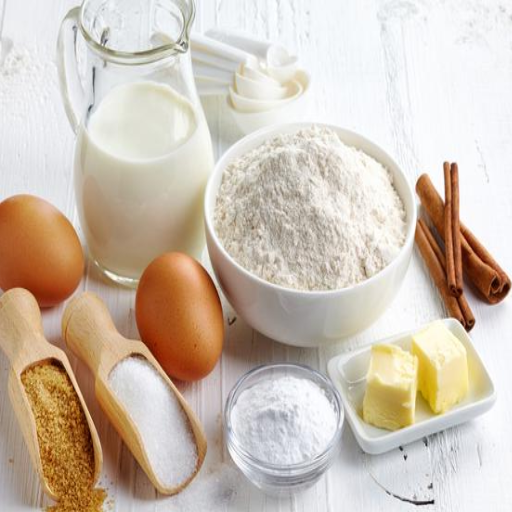
What defines flakiness in biscuits?
Overall, a wonderfully flaky biscuit is an art and a science: each needs specification of ingredients, technique, and patience. Layering dough with fat is one of the fundamentals of creating baked blissfulness, existing between thin, delicate structures. Different fats, such as butter, shortening, or lard, all have fair claims to being preferable. Most would argue that butter feels the best heap of steam as it melts during baking, which lifts the dough to create the layers. The fat should remain very cold; it should not melt before setting.
The final step on the path to biscuit perfection entails integrating the fat into the flour. The fat-to-flour combination should be obtained quickly and gently. Then, the fat is incorporated into the flour until the mixture resembles coarse crumbs with pea-sized pieces. By overworking the dough, you would crush the fat particles too much, ending up with biscuits that tend to be dense and not very flaky. Another way of amplifying flakiness is by folding the dough a few times before rolling it out.
The ratio of liquid to dry ingredients and limited handling are perhaps of the highest concern: too much liquid with aggressive kneading leads to a tough dough that jeopardizes the flaking process by inducing gluten development. Keep the dough soft and a bit sticky, and handle it very lightly; this will allow thin layers of dough united with thin layers of fat to rise and separate perfectly. These transferable traits- that is to say, cold ingredients, minimal mixing, and layered- are the ingredients for a mile-high biscuit that comes apart in buttery light layers, perfect for any occasion.
The Importance of Buttermilk for Biscuit Recipes
Buttermilk is really the secret ingredient for biscuit recipes, and its practical and flavor-boosting capacities can make the difference in the final product. Its slightly acidic nature aids a chemical association with the leavening agents, such as baking soda or baking powder, releasing carbon dioxide gas. This event is responsible for the lovely atmosphere in the light biscuit that has a pleasing rise during baking. In other words, buttermilk alters the gluten structure within the mixture, producing an even softer crumb.
Flavor-wise, an infusion of creams and buttermilk delivers a hint of sharpness to counterbalance the sweet layers of butteriness. It also lends a far richer palette to the taste profile, marrying sweet and savory selections. Regarding nutrition, buttermilk adds soft moisture by being considerably lower in fat than heavy cream, so the texture is suitably thickened with richness rather than heaviness. Bakers would say buttermilk is indispensable for biscuit preparations that are flavored, flaky, and tenderly balanced with structural integrity.
The Key Ingredients for Mile High Biscuits
To produce a perfect mile-high biscuit, one must select the best ingredients that carefully combine to create the desired height, flakiness, and flavors. Here’s what you’ll need:
All-purpose flour: All-purpose flour is best for structuring and binding the biscuits. Lung flour will yield a delicate and airy texture.
Baking powder and Baking Soda: These provide the upward push for fluffiness. Baking powder consistently gives a good rise, and baking soda works well with the acid buttermilk for an even better rise.
Cold Butter: Cold unsalted butter that will melt in the oven and produce steam to launch sticky layers.
Buttermilk: Acidic buttermilk balances the baking soda leavening through its acidity. The moisture in buttermilk keeps the dough from drying out without weighing it down.
Salt: Just a pinch of salt will provide an overall balance of flavors that really brings out the flavors in each of the ingredients, resulting in a very balanced biscuit.
Optional Additions: Shredded cheese, fresh herbs, or garlic powder offer excellent flavor to complement the standard taste of classic transformations.
With these building blocks, a few bags can be whizzed away into fluffy, pretty, sloppy, melt-in-your-mouth flaky levels with equal parts flavor and texture.
Step-by-Step Guide to Making Mile High Biscuits
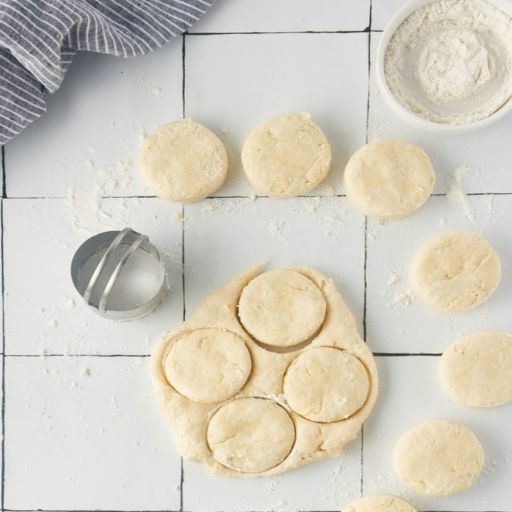
Gathering Your Ingredients
Having the right ingredients is essential for great mile-high biscuits. The base components include all-purpose flour, a leavening agent like baking powder, and a pinch of salt to bring out the flavor. Cold, unsalted butter will flavor the flaky goodness and hence should be cut into tiny cubes for easy incorporation. Buttermilk is the ideal liquid for this recipe, as its acidity reacts with the baking powder to tenderly rise. Regular milk can be substituted with a teaspoon of lemon juice or white vinegar.
Thereafter, other optional ingredients may be prepared for customization. Fresh-grated cheese like cheddar or Parmesan will develop a savory flavor, while chopped fresh herbs like rosemary and chives will offer vibrant fresh notes. These combos allow tailoring such biscuits for any meal or food theme. Each ingredient must be accurately measured and prepared to consistently produce an ever-tall, flaky, and tasty biscuit.
Mixing the Dough for Flaky Mile-High Biscuits
Preparing the dough is essential in baking tall, flaky biscuits. Begin by mixing all dry ingredients, such as all-purpose flour, baking powder, salt, and just a pinch of sugar, in a big bowl. Whisk to distribute everything evenly since uniformity of texture and rise are critical.
The next step is to add cold, cubed butter to the mixture. Retaining chilly butter is the secret to those amazing layers of flakiness! Use pastry cutters or your fingertips to mix the butter with the flour until the mixture resembles coarse crumbs. Do not overwork it, as some chunks of butter in the dough melt and leave their mark during baking to give that perfect flakiness.
Next, gradually add liquids, usually cold milk or buttermilk, and stir gently, either with a fork or a spatula. The resulting dough will be sticky yet manageable. If overworked, it edges closer to being dense, which is not what one needs. Keep it light so air pockets remain, essentially assisting the rising process during baking. With dough ready, shaping and cutting will take center stage as an equally important step toward mile-high accomplishment.
Baking Your Mile High Biscuits to Perfection
Ensure a steady temperature of 425°F (218°C) in your oven. Heat at this temperature and evenly bake to allow for a good rise. The biscuit sheet must be lined with parchment paper or a silicone baking mat to prevent sticking and maintain even heat distribution. Press the dough gently onto the sheet with your fingers to a thickness of 1 inch. Use a sharp biscuit cutter with ideally a 2 to 2 ½ inch diameter to cut straight down without any twisting motion. Twisting the cutter seals the edges and prevents the biscuits from rising properly while baking.
Arrange the biscuits quite close to one another on the baking sheet, either just touching or with a small gap between them. This closeness will help the biscuits rise higher by allowing them to share steam during baking. Brush the tops of the biscuits with melted butter or an egg wash for an extra golden flavor. Bake for 12-15 minutes or until the tops are golden brown.
Remove the baking sheet from the oven and cool the biscuits briefly for 1 to 2 minutes before serving warm. These airy, flaky biscuits are well worth the time and attention. They are perfect with butter, honey, or your favorite jam.
Tips and Tricks for Perfecting Buttermilk Biscuits
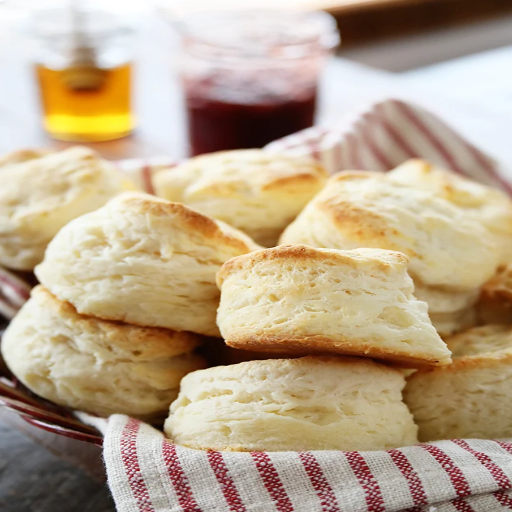
Avoiding Common Mistakes
Overworking the Dough: Over-mixing or kneading the dough will develop excess gluten, toughening the biscuits instead of making them light and flaky. For maximum flakiness, handle the dough just enough to gather it.
Incorrect Use of Cold Butter: Of course, you want your cold butter to impart flakiness; however, it must be incorporated correctly. Too-large pieces would not distribute evenly, while too-small pieces would melt away too fast. Aim for those pea-sized bits that end up forming the layering beauty for you.
Not Measuring Accurately: Baking is science; wrong measurements of flour, buttermilk, or leavening agents upset the balance. Always use proper measuring containers for dry and liquid ingredients, measure carefully, and level off as needed.
Neglecting to Preheat the Oven Properly: Biscuits in a moderately heated oven will barely rise, creating a coarse flat texture; a stove should always be hot by the time one is ready to bake.
Improper Specs for Biscuit Cutting: Twisting the biscuit cutter when shaping these biscuits will seal the edges and keep the biscuits from rising evenly. Instead, just press the cutter straight down for a clean cut. Also, make sure you use a sharp cutter: it makes a difference in the nice definition of the shapes.
Incorrectly Placed on Baking Sheet: Putting the biscuits too close to the baking sheet doesn’t allow hot air to circulate, which is necessary for proper browning and consistency. Leave just enough space between them to allow for even baking.
By simply averting these common mistakes, you will take your buttermilk biscuits from good to great with consistent bakery-quality results every time!
How to Get That Perfect Rise
Perfectly risen buttermilk biscuits must start with the right ingredients and techniques. To begin with, always use fresh, active leaveners, which are a good measure of baking powder (or baking soda). Expired leaveners will significantly limit your rise, causing flat and dense biscuits. To check for freshness, mix one teaspoon of the leavening with warm water: if it fizzes vigorously, it is good to go.
Temperature again comes into play—a key factor to watch out for. Your butter and buttermilk should be kept cold until the last moment. Cold butter creates steam pockets as it melts during baking, aiding the biscuits in puffing up while remaining flaky and airy. Work fast and keep your butter cold!
Do not overwork your dough, either. Too much kneading builds up gluten and keeps the biscuits from rising as well as they should. Instead, fold gently to layer the dough a few times without overdeveloping the structure.
Use a sharp-edged biscuit cutter to cut the biscuits. Don’t twist the cutter. Twisting seals the edges, thus impeding the rise during baking. Just press straight down and lift the cutter cleanly to get your biscuit cut properly.
Lastly, bake the biscuits at a high temperature, around 425°F (220°C). This ensures a rapid rise from dough reacting to sudden heat and activation of leavening agents that give perfect buttermilk biscuits the iconic fluffy and golden-brown look. Follow these steps and enjoy tasty results that look great, too.
How to Store and Reheat Biscuits
After cooling completely, biscuits should be stored fresh in an airtight container. They keep well for 2 days at room temperature, while more extended storage will require refrigeration. For more extended storage, biscuits can be frozen. Wrap individual biscuits in plastic or aluminum foil and then place them in freezer-safe bags or containers. The frozen biscuits remain of good quality for 3 months.
The reheat method will make all the difference. If biscuits are at room temperature, preheat an oven to 350°F/175°C, then reheat for about 5-7 minutes until warm, bringing back the flaky texture and tenderness. When reheating directly from frozen, never defrost the biscuits first; place frozen biscuits directly into an oven preheated to 350°F for around 10-12 minutes. Alternatively, a quick reheating solution is to microwave them on low power for 20-30 seconds, which may alter their intended texture briefly. Following these steps will guarantee your biscuits remain tasty and fresh, regardless of when you eat them.
Creative Variations on Mile High Biscuits
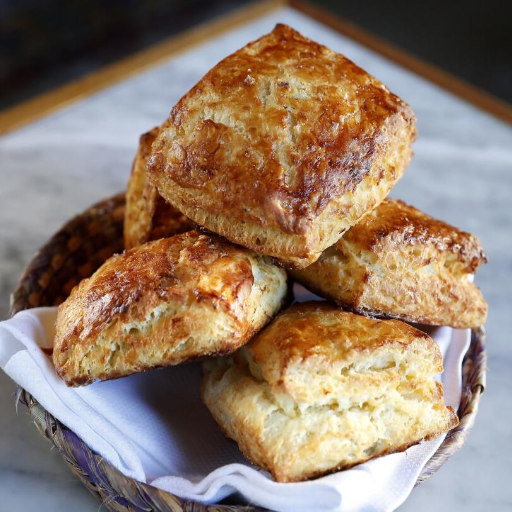
Adding Flavor with Herbs and Cheese
One way to bring Mile High Biscuits to a new level is by working with fresh herbs and cheeses to complement all that buttery flakiness. You can stir together a variety of chopped chives, rosemary, or thyme into the dough for a perfect savory impact. These herbs enhance the flavor while filling the kitchen with a tantalizing aroma that demands you to scoop the warm biscuits with your hand. Add some oregano and parsley to achieve a more Mediterranean flavor, or add a daring garlic note. This way, you can season the herbs to the taste of your liking or to fit the meal’s theme, making them adaptable and a favorite with the crowd.
Cheese is certainly another delicious ingredient to go with and customize your biscuit. Grüyère cheese, with its sharp flavors, complements the richness of the dough, cheeseballs that melt in your mouth with the finest creaminess. A sprinkle of this cheese on top of your biscuits before baking gives a nice golden crust with suitable crunchiness in contrast to that softness inside. Depending on whether you want a little or an intense cheesy flavor, various cheeses can be used to make countless tasty versions of these biscuits.
Herbs and cheese make the real biscuit stand out, adding layers of flavors and complexities with every bite. Picture melting cheddar and chive biscuits with a creamy soup bowl or Parmesan and rosemary biscuits rumbling your tastebuds with a thick stew. The combinations are limitless, making Mile High Biscuits, with herbed cheese enhancements, an effortless elegance for winning over family and friends, adding charm to a party, and giving this classic a fresh, personalized face.
Sweet Mile High Biscuit Recipes
Sweetening the Mile High Biscuits opens creative opportunities for making desserts and breakfast treats. If you’d like to keep it simple, brush the tops with melted butter, sprinkle with coarse sugar, and bake to form a beautiful caramelized crunch. Meanwhile, deeper explorations can include the addition of cinnamon, nutmeg, or vanilla extract for a warm and comforting array of notes.
Alternatively, the biscuit can be sweetened with fruit. Toss in the dough with fresh blueberries, diced strawberries, or dried fruits such as apricots or cranberries that pack a flavor punch. Drizzle these fruity biscuits with ample whipped cream or honey for a stunning display and delightful taste.
For dessert-style preparation, layer the biscuits with macerated fruits and sweet cream to make an impressive berry shortcake. This dessert is perfect for special celebrations or informal family meals and is a testimony of all the different ways the biscuit can be showcased. Rich chocolate chip or tart lemon glaze are a few possibilities for making sweet Mile High Biscuit creations that are indulgent and fulfilling!
Gluten-Free Options for Mile High Biscuits
Gluten-free alternatives can still make the same furry, towering heights with the right ingredients and techniques. Swap the all-purpose flour for a high-quality gluten-free flour blend, and make sure this blend contains xanthan gum or guar gum, which are required for elasticity and structure. Beyond the flour blend, one may consider using almond or coconut flour for contrasting flavors and textures. Keep an eye on liquid ratios because these flours behave differently in soaking up.
Using chilled butter or vegan alternatives ensures that the biscuits remain flaky, while also considering the buttermilk or its options, such as almond or oat milk, to keep the biscuits tender. Be lenient, though, when mixing the dough. Overworking it might harm the rise and texture. Baking at high heat ensures a golden exterior and light, airy interior.
Gluten-free Mile High Biscuits retain their infinite versatility and work well with sweet or savory toppings alike, making sausage gravy or fruit preserves hearts-in-favor types for all kinds of dietary needs. They do not cut corners in taste or decadence. With these substitutions, everyone at your table can enjoy the classic comfort of Mile High Biscuits.
Elevate Your Baking Skills with Mile High Biscuits
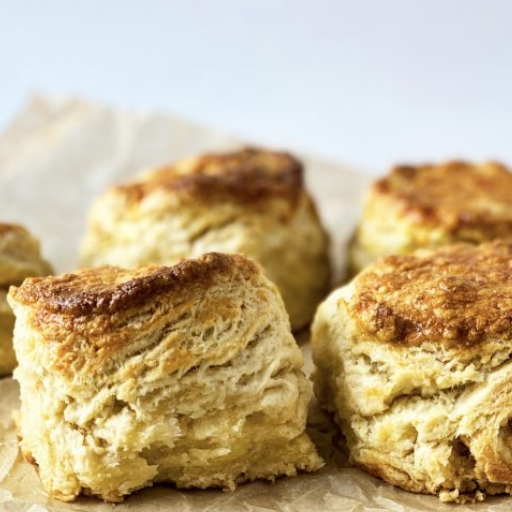
Why You Should Save This Recipe
Save-this-recipe-because-it-combines-easy-with-did-something-majestic-hence-perfect-for-any-baker. From weekend brunch to a speedy dinner side, these Mile High biscuits never fail to live up to your expectations, every time, with that bakery touch. Simple techniques and easily available ingredients mean you will never have to scout for something rare to bake tall and fluffy biscuits.
I appreciate how flexible the recipe is. With some small changes, it caters to many dietary constraints or preferences, such as gluten-free or vegan, without losing texture or flavor. They provide a classic and versatile canvas for top-notch savory and sweet combos. These can go from heavy gravies to fragrant jam; their light and airy crumb becomes a worthy food-giver to almost every dish.
Lastly, I have saved this recipe for its kind of comfort that somehow always lifts me with memories of my grandmother’s table. Simply enough, in this recipe, I discover happiness, for companionship, and sharing. That ease, flexibility, and heart-touching quality make this recipe endearing to me. I will keep coming back for it.
Getting Home Bakers to Experiment
When encouraging home bakers to experiment, I emphasize the unrestricted joy of creativity and being able to learn in the process. Baking is not just following a recipe blindly; it is about exploring combinations of flavors, textures, and techniques that resonate with your tastes and personality. For instance, for your traditional preparations, you can start by spicing things up, whether it be cinnamon, nutmeg, or even a drop of chili. Following that could be interchanges like using whole wheat flour instead of all-purpose flour, or maybe a dairy substitute, which can have fun results and make food accommodating to a special dietary specification or need.
In my experience, experimentation can make one cling to old expeditions with renewed vigor. For example, I love baking those biscuits: sprinkle them with fresh herbs like rosemary or thyme, or chuck in some grated cheese for him, which changes the whole taste. Little cuppées, such as brushing them with garlic butter, also set them on a level all their own. Through experimenting, I have found some combinations that are now some of my favorites, which has built my confidence as a baker.
I encourage bakers to embark on experimental journeys without ever fearing to err. Some will not turn out the way we expect, while some “errors” can sometimes open doors to discoveries, and at worst, we will always learn something. The most important thing is to have fun doing it, keep notes on what works, and continue exploring. After all, baking is as much about the journey as it is about the end result.
Receive New Recipes and Further Your Baking Adventures
Absolutely! To receive new recipes and further your baking adventures, the first step is subscribing to reliable baking newsletters, blogs, or recipe collections that suit your interests. I like to follow seasoned bakers and imaginative culinary souls who share uncommon ideas and approaches. Subscribing to these helps ensure new recipes are delivered into your mailbox repeatedly, inspiring you with concepts to test in your kitchen. You can also consider joining online baking communities or forums wherein calendars and tips are shared among members, an easy way to stay motivated while building your recipe repertoire.
Another tip and trick is tracking seasonal ingredients or trending baking techniques-they usually come bearing very nice recipes. For example, I check social media or recipe apps for what’s hot or what kind of strange flavor combos are being tried out by the folks around me. These platforms have recipe suggestions you never thought about, so they open up an avenue for you to explore in the kitchen. Wherever you find your recipes, keep a running list of the ones that excite you most, so you will always be ready for your next baking session.
And last but not least, don’t overlook the untapped potential of your favorite basics. Whether giving it a twist with some tweaks to the ratios, a new powder to mix it up, or even swapping out an ingredient for another one or two, such little changes just might bring about a whole new thing. Maintaining your curiosity and staying in touch with baking resources will keep the flow of beautiful ideas ongoing-will fuel your passion and fresh ideas worthy of your creative spirit.
Reference Sources
-
The Secret to Getting Mile-High Biscuits – AllRecipes
This article reveals surprising pantry staples that can make or break your biscuit height. -
Hints To Making Mile High Biscuits – Welcome Home Blog
A detailed recipe and tips for achieving perfectly tall and fluffy biscuits. -
Mile High Biscuits {Best Buttermilk Biscuits!} – Easy Family Recipes
A comprehensive guide to making the best buttermilk biscuits with mile-high results. -
Mile High Biscuits Recipe – Food.com
A classic recipe with step-by-step instructions for creating tall, flaky biscuits. -
Ruth’s Diner’s Mile High Biscuits – This Grandma Is Fun
A popular recipe inspired by Ruth’s Diner, known for its iconic mile-high biscuits.
Frequently Asked Questions (FAQs)
What Are Mile High Biscuits?
Mile High Biscuits are perfect pastries, famous for their flaky texture and rich flavor. Made from quality ingredients, this buttery goodness melts right in your mouth. These lovely little morsels can serve you up for breakfast or can be munched alongside a cup of tea at any time of the day. They go well plain or with butter and jam on the side. Some recipes fold in other flavor-enhancing ingredients like cheese or herbs. The name “Mile High” suggests these biscuits should be pretty tall and fluffy!
How Do You Make Mile High Biscuits?
Mile High Biscuits shall be made in a few simple steps that make them very good. Sift all-purpose flour, baking powder, and salt into a mixing bowl. Then you cut in cold butter using a pastry cutter or two knives until it looks like coarse crumbs. Slowly pour in the milk or buttermilk with a spoon until just a dough comes together, but you don’t want to overmix. Roll out the dough, fold it three times to build layers, and then cut it into rounds. Baking at a higher temperature will guarantee a nice rise and a lovely golden crust. Add whatever flavors you want to experiment with. Grated cheese and herbs are a few doses of awesomeness to the dough.
What Are Some Popular Variations of Mile High Biscuits?
Mile High Biscuits have many variations to suit individual tastes and preferences. Some popular variations are cheddar Mile High Biscuits, which provide a savory note of sharp cheddar cheese. Other varieties could include sweet biscuits with cinnamon and sugar, which are ideal for dessert or breakfast. The healthiest would use either whole wheat or gluten-free flours. These with added jalapeños or bacon make for a tasty morning treat. Trying different flavorings will help you tailor Mile High Biscuits for any occasion.
What Are the Best Ways to Serve Mile High Biscuits?
There have to be various ways of serving Mile High Biscuits that make them more enticing. Your classic breakfast would call for warm ones slathered with butter and your fanciest jam or honey. They are also good with the savory side, making great company to almost any soup or stew. Great at brunch are those with eggs, cheese, and herbs, on the way to a yummy biscuit sandwich. They would also be great with fried chicken for a northern Alabama-style dinner. And gravy, no? It would go great!
Can Mile High Biscuits Be Frozen?
Yes, in-season Mile High Biscuits can be frozen and offer a convenient choice for busy families. After baking, cool the biscuits completely and place them in an airtight container or freezer bag. They can be frozen for up to 3 months. To warm, throw them in a low-temperature oven until ready. Alternatively, freeze the unbaked dough and bake it directly from the freezer, adjusting the baking time as needed. This allows you to eat fresh biscuits anytime!
What Makes Mile High Biscuits Different Than Regular Biscuits?
Mile High Biscuits are considered different from ordinary biscuits because of their size and texture. Folding and rolling the dough many times creates layers and allows them to be thicker and fluffier. Ingredients and the baking method contribute to the best great taste: the quality of the butter and flour is paramount. The best baking temperature is quite high and promotes height and browning of the biscuits. Simply said, they are supposed to be a more luxurious version of regular biscuits, so they are considered a special treat with any meal.
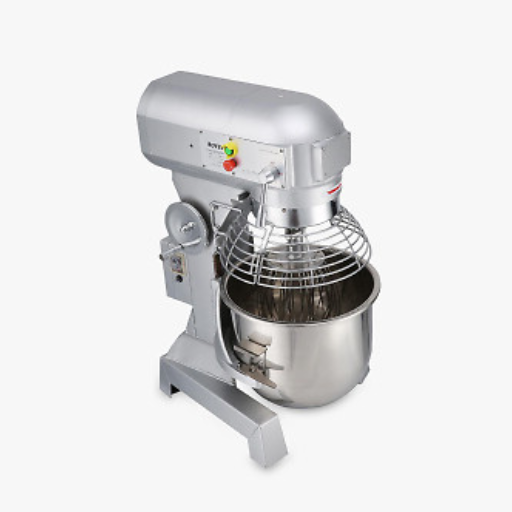
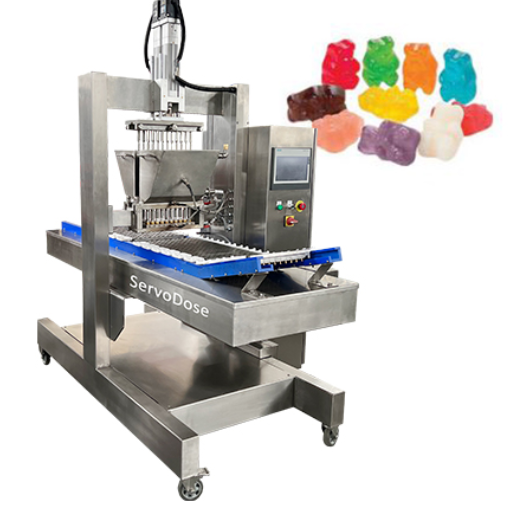
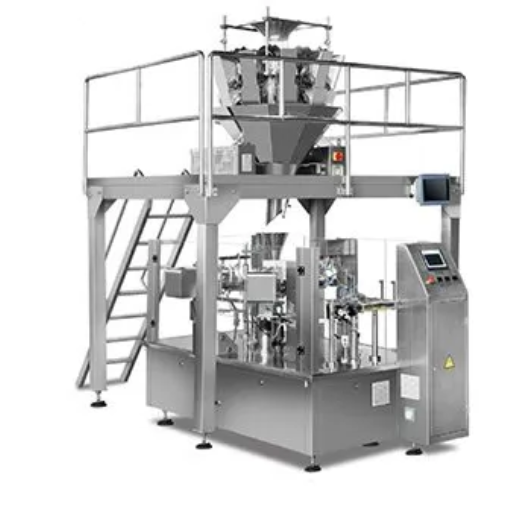
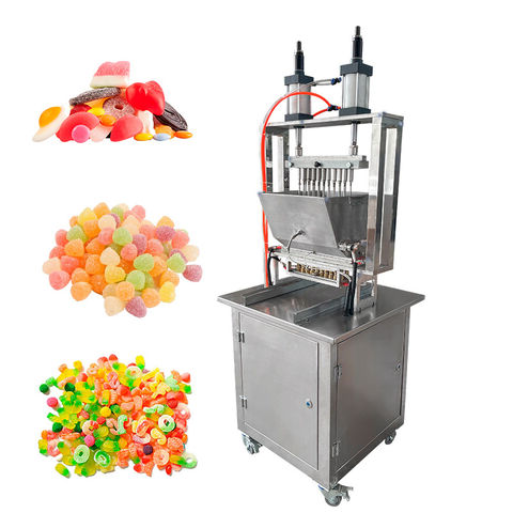
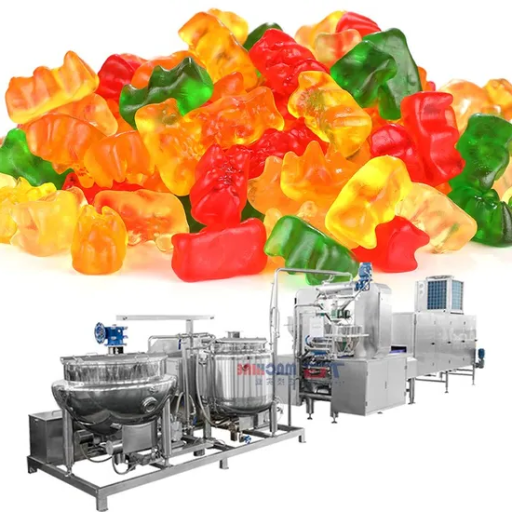
Blog Categories
Popular Blog Tags

Shanghai Fude Machinery Manufacturing Co., Ltd is a leading manufacturer of top-notch gummy and cookie making machines with more than 15 years’ experience in the industry. We provide creative equipment that ensures accuracy and speed while sharing intelligence with food producers. Shanghai Fude remains to be one of the most reliable companies for food machinery because of its dedication to perfection.



